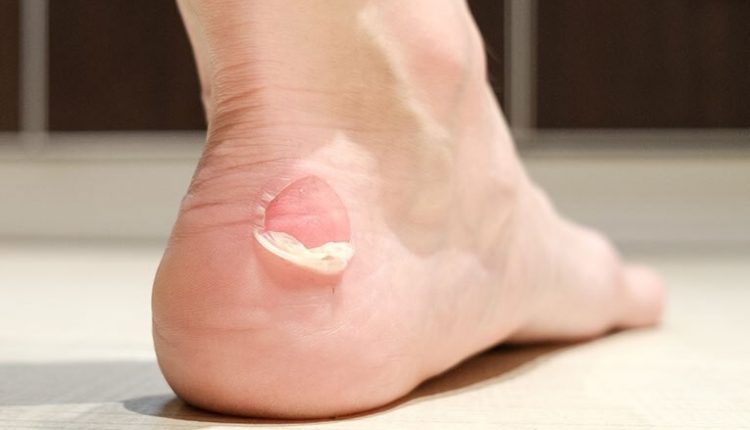
Foot blisters, what remedies?
Among the most common causes of blisters, especially on the feet, are continuous rubbing between skin and footwear and sunburn
Blisters on the feet, what are we talking about?
In both cases, as a result of the damage between the dermis and epidermis, a collection of fluid (serum) forms, which causes the blister or blister to form.
If the blister is still small (<5mm) and little or no pain, it is advisable to keep it intact: the skin constitutes a natural barrier against bacteria and reduces the risk of infection.
Therefore, it is advisable to cover it with a small plaster to protect it and wait for spontaneous reabsorption, which can take about two or three days.
If, on the other hand, the blister or boil is large and painful, what should one do?
In that case, it is necessary to drain the accumulated fluid under the skin by making a small hole with a sterile needle and taking care to disinfect the skin before and after the procedure.
However, it is important to leave the roof of the blister (the overlying skin) intact to speed up the healing process.
How can blisters be removed?
The procedure for draining the fluid in the bladder is very simple:
- Disinfect the blister with a disinfectant (aqueous solution of benzalkonium chloride)
- Equip yourself with a disposable syringe such as those for insulin
- Make one or more small holes at the edge of the bladder or blister (the operation does not cause pain)
- Using gauze, apply gentle but constant pressure to the roof of the blister or blister until all the fluid has escaped and the blister adheres to the skin.
- Disinfect again and cover with a medicated plaster.
The skin forming the roof of the blister will remain as a natural dressing until it heals.
Afterwards, should it detach spontaneously, the underlying skin can be dressed with a healing ointment and protected from further trauma.
How can blisters be prevented?
The first thing to do if you are planning a long walk, run or other activity is to medicate the skin.
Micronised zinc oxide and magnesium silicate creams are good for this.
These creams perform two important actions: they soften the skin and reduce friction with socks or shoes.
In addition, zinc and magnesium powders keep the foot drier and absorb sweat.
As far as socks are concerned, opt for thin socks, preferably seamless ones such as microfibre.
Socks should also be the exact size of the foot, neither too big nor too small.
Obviously, it is essential to choose footwear that is suitable for the type of activity.
What care should be taken when buying a new pair of shoes?
Shoes differ according to the activity to be performed, whether for walking, jogging or trekking.
The common denominator for not getting blisters is that they fit perfectly.
In other words, when we wear them for the first time, our foot must feel perfectly contained and restrained and there must be no creases or seams.
When we take our first steps, care must be taken that the forefoot does not slip forward and then backward and that when we lift the heel off the ground the shoe follows the movement and there is no play between shoe and foot.
When we flex the foot the upper must not rub against the back of the foot and we must not feel the pressure of the laces.
Read Also:
Emergency Live Even More…Live: Download The New Free App Of Your Newspaper For IOS And Android
Wound Infections: What Causes Them, What Diseases They Are Associated With
Flat Feet In Children: How To Recognise Them And What To Do About It
Patrick Hardison, The Story Of A Transplanted Face On A Firefighter With Burns
First Aid, Treatment For Burns And Scalds
Eye Burns: What They Are, How To Treat Them
Burn Blister: What To Do And What Not To Do



